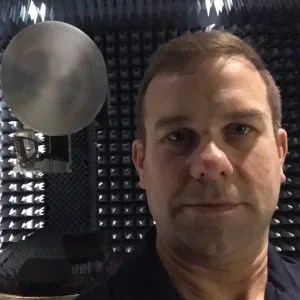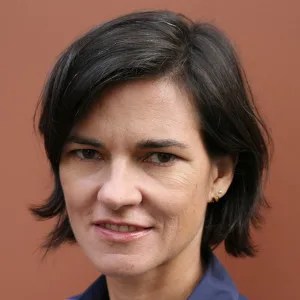Planetary Boundary Layer (PBL)
Overview
Improved understanding and prediction accuracy of the atmospheric Planetary Boundary Layer (PBL) and the ability to make significant advances in several PBL application areas (e.g. air quality and human health, improved forecasting of severe storms, improved climate projections, renewable energies) are currently constrained by the lack of global PBL observations at sufficient spatial and temporal resolution and sampling. Current satellite observations from techniques such as radio occultation, microwave sounding and imaging, and infrared sounding are key for sampling PBL conditions over remote regions, such as the oceans and high latitudes. However, satellite capabilities to penetrate and resolve the vertical structure of the PBL are still limited.
Improved observations of the PBL and its interactions with the ocean, land, and ice surfaces have the potential to advance science on a number of fronts, including improvements to both short-term weather and air quality forecasts, climate modeling, and estimates of trace gas emissions and transport. New observing technologies and approaches, including in situ as well as ground-based, airborne, and satellite remote sensing, have the potential to increase significantly the quality, amount and types of observations collected within the PBL.
The 2017 National Academies of Sciences, Engineering and Medicine Earth Science Decadal Survey selected the PBL as an Incubation Targeted Observable. In this context, the Decadal Survey recommended the implementation of a PBL incubation program to accelerate the readiness of high-priority observables not yet feasible for cost-effective flight implementation. PBL Incubation science goals call for exploring next-generation measurement approaches that could be ready for spaceborne implementation in 10+ years. The decadal survey recommends focused and sustained attention to these observables to establish PBL science and user communities, and to make progress towards maturing both measurement capabilities and implementation concepts within this decade.
The main objective of the NASA PBL incubation Study Team is to identify methods and activities for improving the understanding of, and advancing the maturity of the technologies applicable to the PBL Targeted Observable and their associated science and applications priorities.
The main deliverable produced by the PBL Study Team will be a PBL white paper outlining potential future methods and activity areas, such as a range of potential observing system architectures utilizing emerging sensor and information technologies, modeling and Observing System Simulations Experiments (OSSEs) and field campaigns.
PBL Incubation Report
NASA PBL Study Team Report (PDF)
Suggested citation:
Teixeira, J., J. R. Piepmeier, A. R. Nehrir, C. O. Ao, S. S. Chen, C. A. Clayson, A. M. Fridlind, M. Lebsock, W. McCarty, H. Salmun, J. A. Santanello, D. D. Turner, Z. Wang, and X. Zeng, 2021: Toward a Global Planetary Boundary Layer Observing System: The NASA PBL Incubation Study Team Report. NASA PBL Incubation Study Team. 134 pp.
PBL Team
 Joao Teixeira NASA/JPL Science Lead; PBL science |  Jeffrey Piepmeier NASA/GSFC Technology Co-Lead; Architectures and Instrument Technology |  Amin Nehrir NASA/LaRC Deputy Technology Co-Lead; Sat & suborbital remote sensing; Instrument tech |  Chi Ao NASA/JPL Satellite remote sensing; radio occultation; GNSS technology |
 Shuyi Chen University of Washington |  Carol Anne Clayson CASIMAS, WHOI Marine planetary boundary layer & interactions w/ ocean surface |  Ann Fridlind NASA/GISS Cloud microphysics & dynamics in observations & models |  Matthew Lebsock NASA/JPL Planetary boundary layer clouds and climate; Satellite remote sensing |
 Will McCarty NASA/GSFC Satellite Data Assimilation; Observing System Simulation Experiments |  Haydee Salmun Hunter College of CUNY Land-atmosphere interactions; PBL height retrieval |  Joseph Santanello NASA/GSFC Land-Atmosphere Interactions, Hydrology, Regional Coupled Modeling |  Dave Turner NOAA/GSDL Surface-based thermodynamic profiling |
 Zhien Wang University of Colorado at Boulder PBL measurement and analysis; lidar instrumentation |  Xubin Zeng University of Arizona Modeling & analysis of PBL over land, ocean & ice |
NASA PBL Study Team Charter
The summarized charter of the NASA PBL Study Team is to:
- Identify the most critical PBL science and applications questions in the context of Earth System science considering the diverse spatial and temporal scales of the atmosphere, ocean, land and ice.
- Identify specific PBL needs from a data-assimilation, modeling and prediction (weather, climate, regional, LES) perspectives.
- Identify the critical geophysical observables and their associated spatial and temporal requirements (resolution, sampling) to address the key PBL questions and needs.
- Identify the observational gaps from the current program of record.
- Identify practical yet effective emerging measurement approaches and technologies to address measurement goals from space using a range of system architectures.
- Develop a technology roadmap to enable a future orbital observing system (in combination with suborbital and ground-based observations, models and data-assimilation systems) based on these technologies (including EV and Explorer possibilities).
- Identify simulator methodologies – involving high-resolution PBL models, instrument forward models, joint retrievals and data-assimilation systems – to explore optimal combinations of potential measurement approaches and technologies.
- Develop a strategy to field emerging airborne instruments in science campaigns to evaluate the information content of joint retrievals and their relevant impact.
The study team has completed its efforts and has synthetized all these findings into a PBL white paper that includes a preliminary PBL Science and Applications Traceability Matrix (SATM).
PBL Technology Survey
The PBL study team is requesting information on:
- Emerging measurement approaches and technologies to enable high resolution thermodynamic profiling within the PBL from space within the next 10-15 years
- Technologies that offer the potential to reduce the size, weight and power of established measurement techniques


























